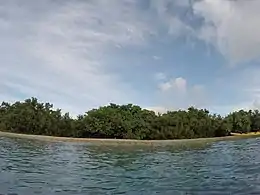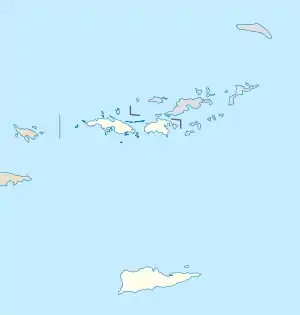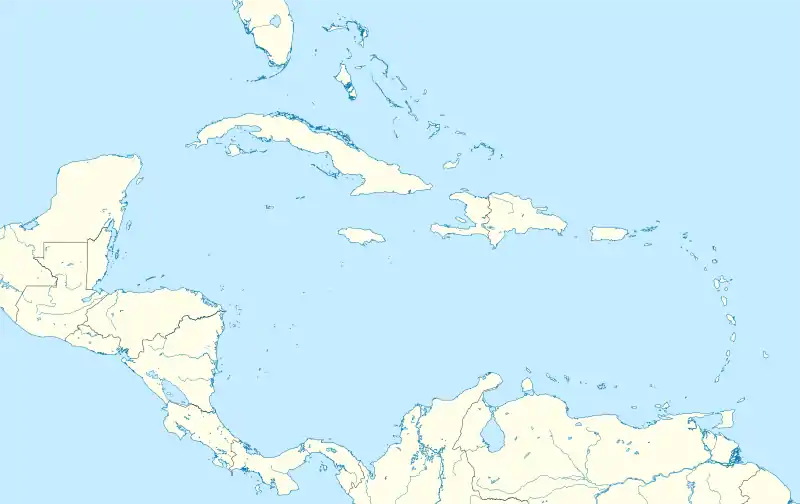Cas Cay
Cas Cay is a fifty-acre (200,000-square-metre) undeveloped island, situated a mile south of Red Hook on the eastern side of Saint Thomas in the United States Virgin Islands. It is under the protection of the Department of Natural Resources.[1][2] Ferries here depart from Compass Point Marina, right east of Nadir.[3] It is a tropical island, which has a hundred feet tall hill with bird species such as the Red-billed- and White-tailed tropicbird. It is also home to endemic plant species such as orchids, Tabebuia, gumbo-limbos, as well as the seagrape, manchineel and numerous mangroves. It is home to lizards such as anoles, ameiva and geckos.[4] The island has a high density of rats (Rattus rattus) as well.[5] It has a mangrove lagoon and is one of the largest mangrove areas in the Virgin Islands.[6] Besides the mangrove ecosystem, the wildlife sanctuary, the natural whirlpool and blowhole, many visit the island for recreational activities such as snorkeling, scuba diving, kayaking and bird watching.[7] The nearby Cas Cay-Mangrove Lagoon Marine Reserve & Wildlife Sanctuary is located in the Jersey Bay immediately north of Cas Cay.
 Cas Cay, 2014 | |
 Cas Cay Location in the Caribbean  Cas Cay Cas Cay (Caribbean) | |
| Geography | |
|---|---|
| Location | Caribbean Sea |
| Coordinates | 18°18′25″N 64°51′55″W |
| Area | 50 acres (20 ha) |
| Administration | |
| Federal Department | U.S. Department of the Interior |
| Federal Agency | U.S. Fish and Wildlife Service |
| Capital | Washington, D.C. |
| Largest settlement | New York City |
| President | Donald John Trump |
References
- Sullivan, Lynne M. (2008). Adventure Guide Virgin Islands. Hunter Publishing, Inc. Page 84. ISBN 9781588435811.
- Colón, Christina Paulette (2011). Frommer's Caribbean. John Wiley & Sons. Page 26. ISBN 9781118107348.
- Greenberg, Harriet and Douglas (2006). The US Virgin Islands Alive!. Hunter Publishing, Inc. Page 68. ISBN 9781588435842.
- Nellis, David W. (2000). Puerto Rico & Virgin Islands Wildlife Viewing Guide. Falcon. Page 74. ISBN 9781560448365.
- Schwartz, Albert and Robert W. Henderson (1991). Amphibians and Reptiles of the West Indies: Descriptions, Distributions, and Natural History. University Press of Florida. Page 609. ISBN 9780813010496.
- Spalding, Mark (2010). World Atlas of Mangroves. Routledge. Page 198. ISBN 9781136530968.
- Showker, Kay and Mary Brennan (2008). Caribbean Ports of Call: Eastern and Southern Regions: A Guide for Today's Cruise Passengers. Globe Pequot. Page 73. ISBN 9780762745388.